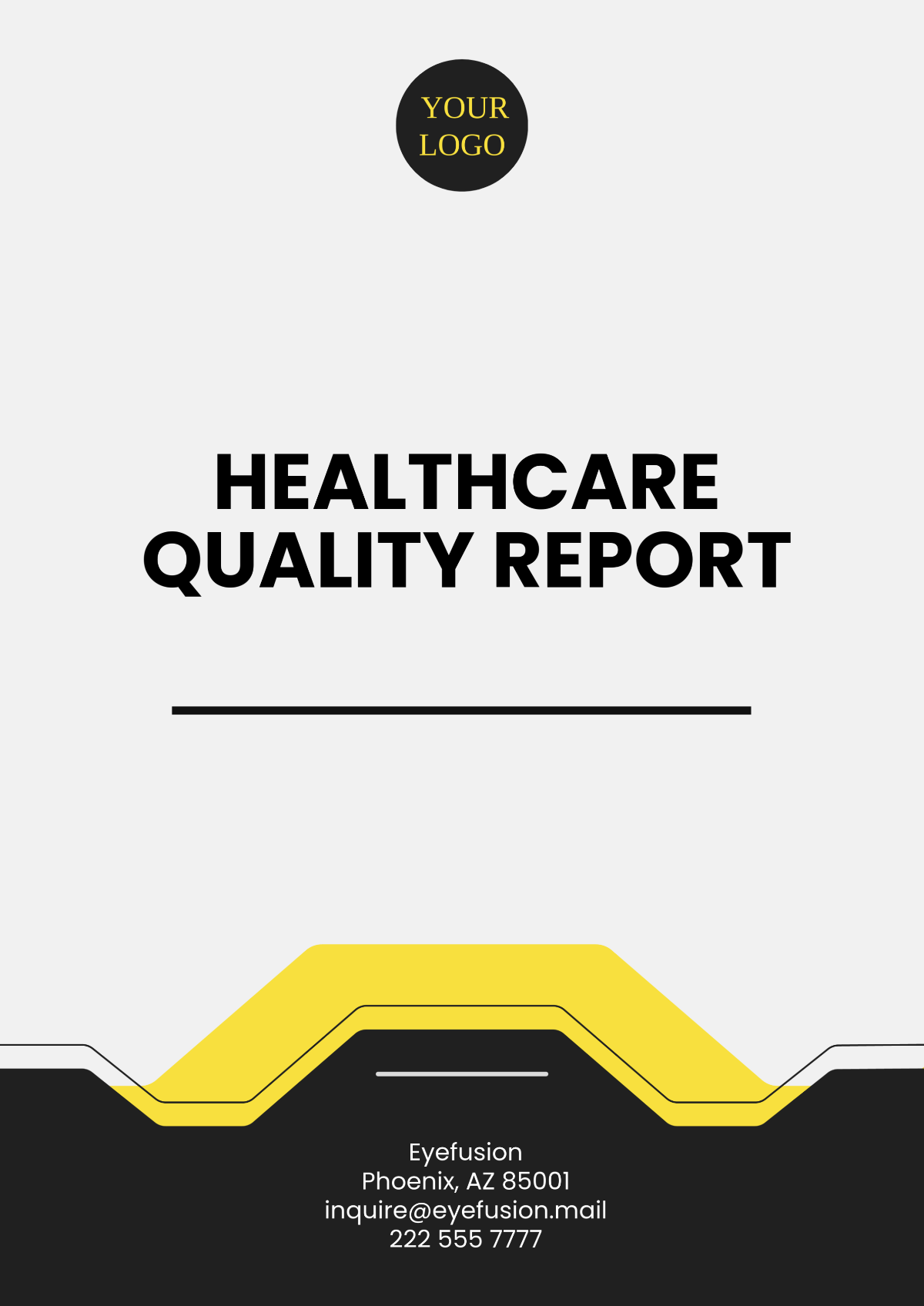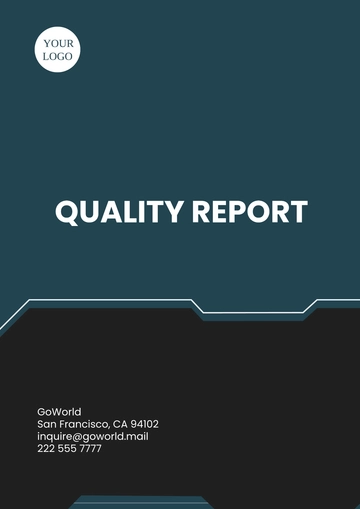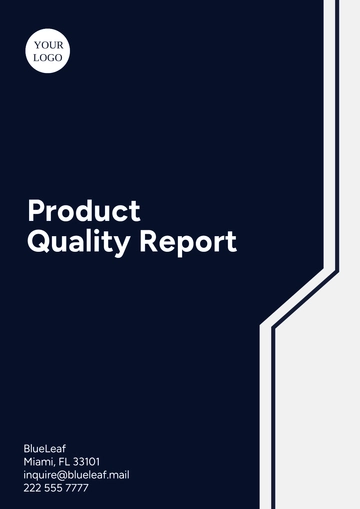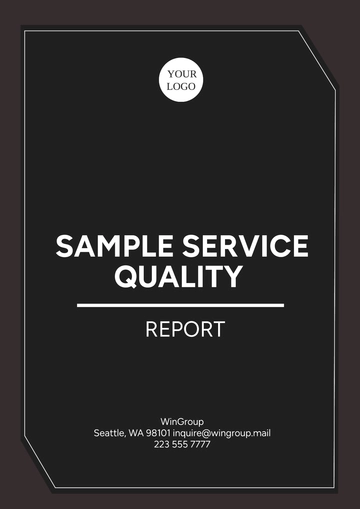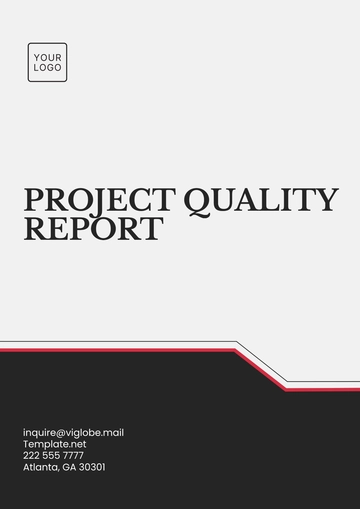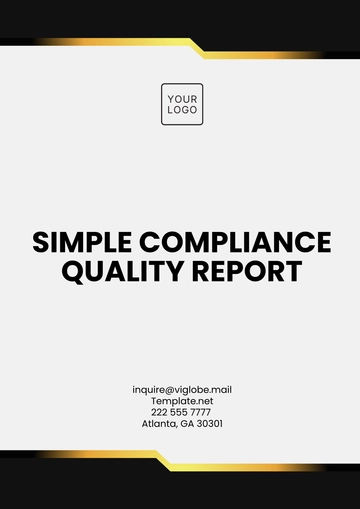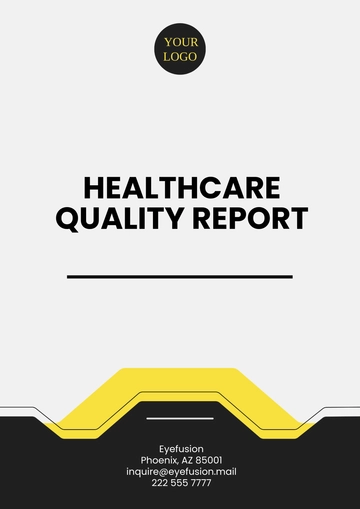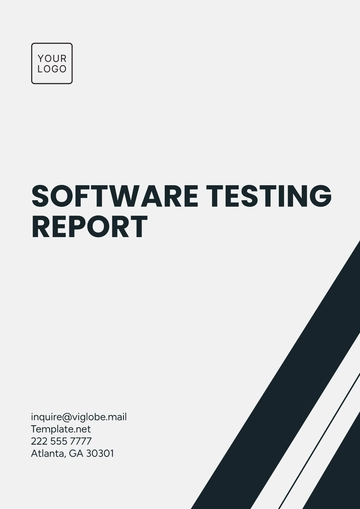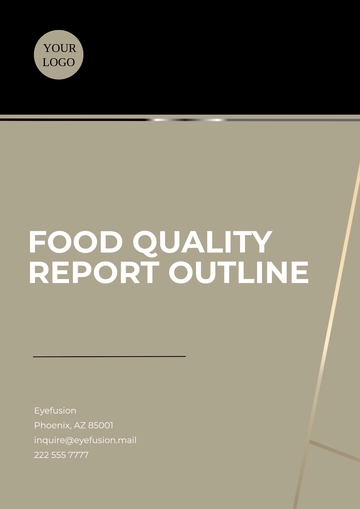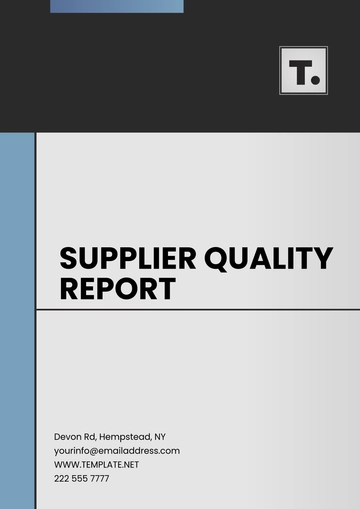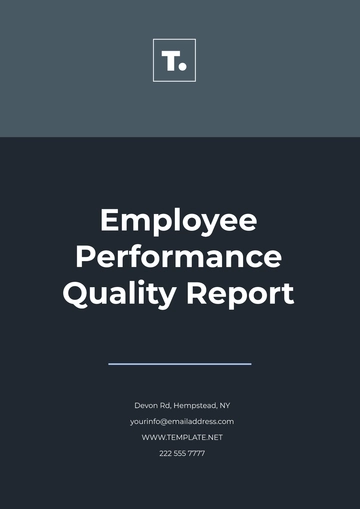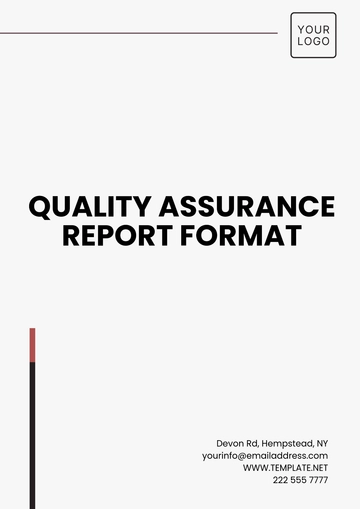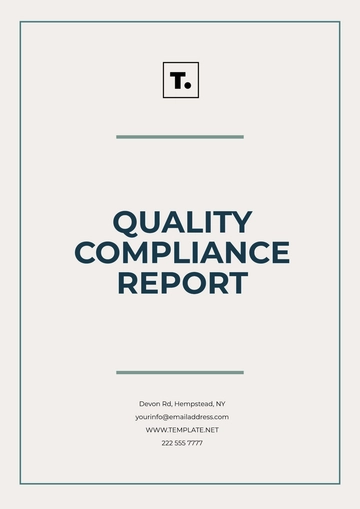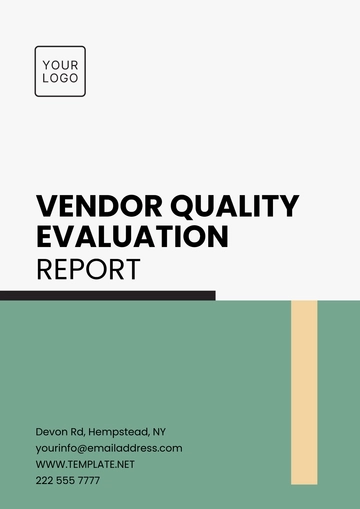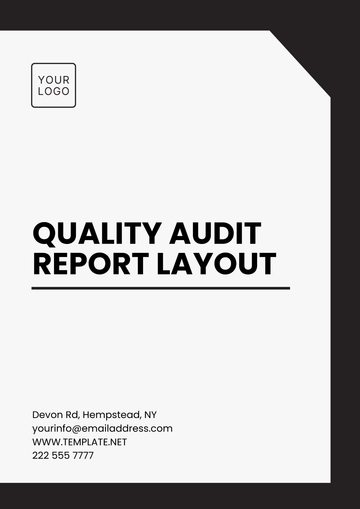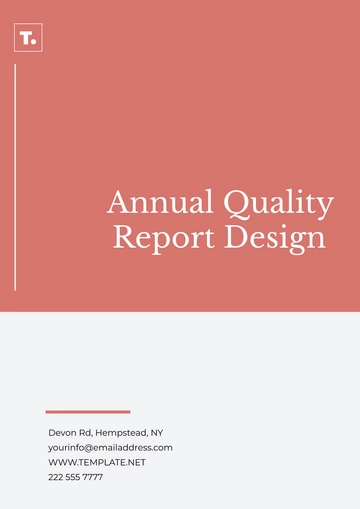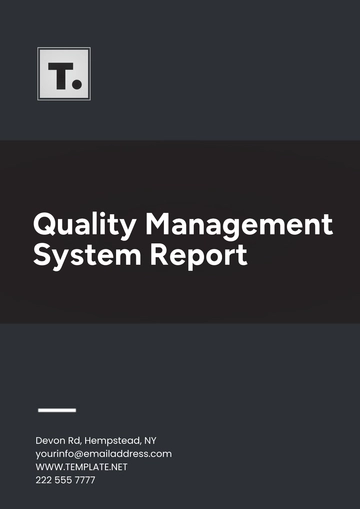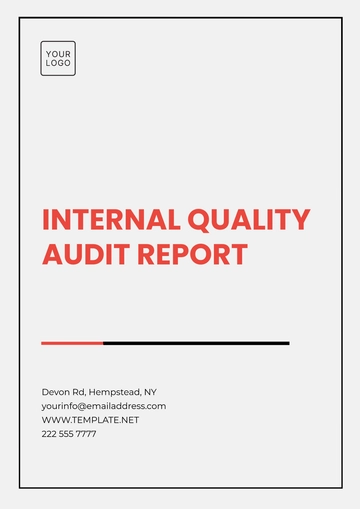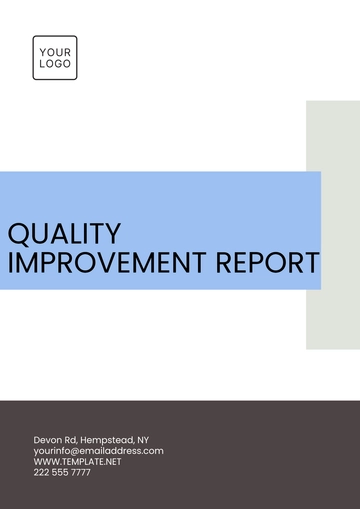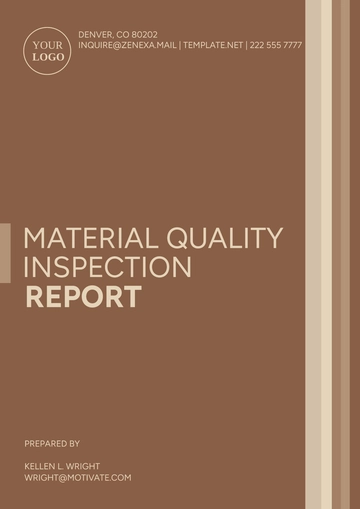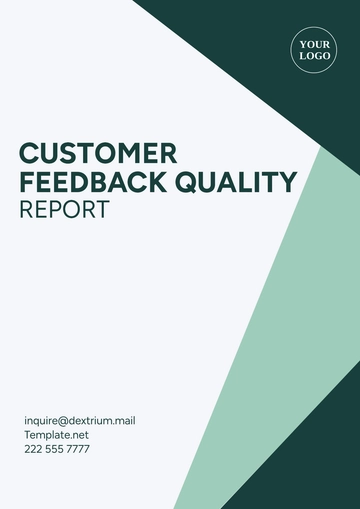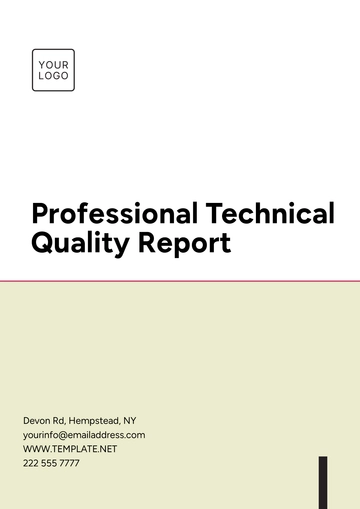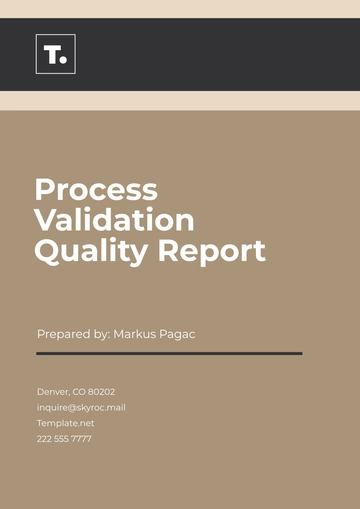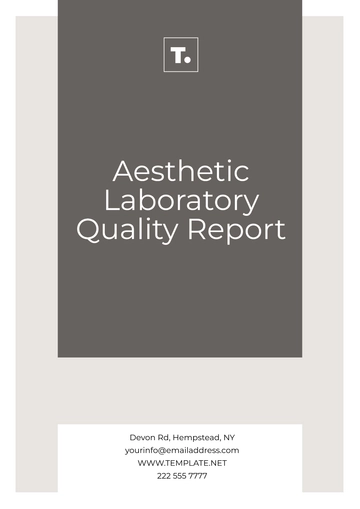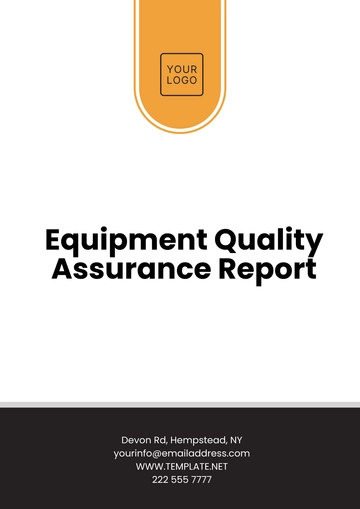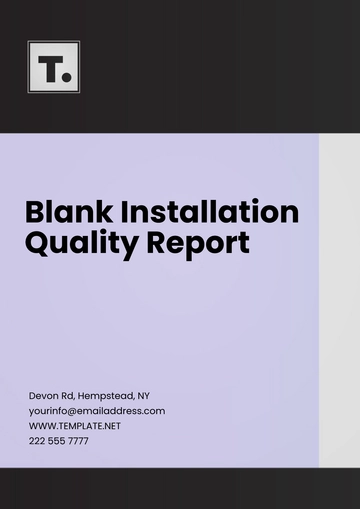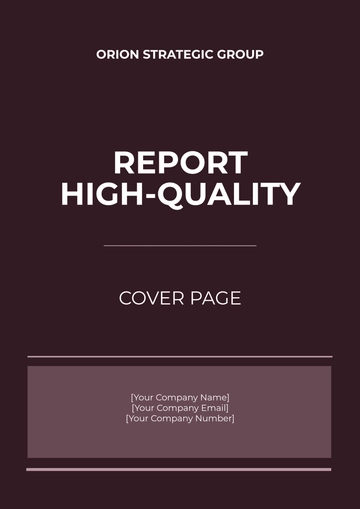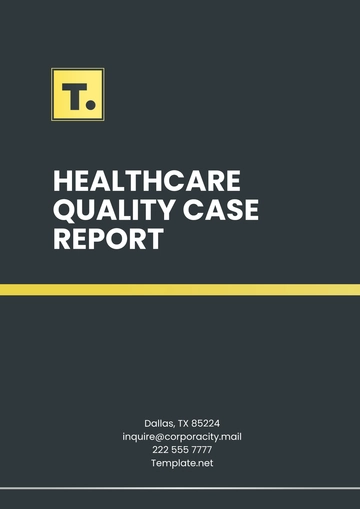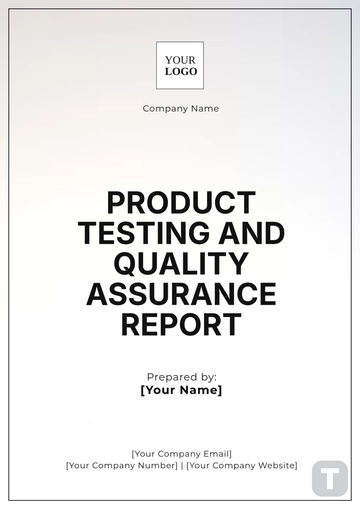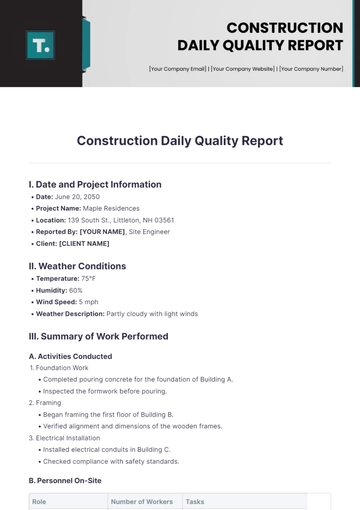Healthcare Quality Report
Executive Summary
This report provides a comprehensive evaluation of the healthcare quality metrics for over the reporting period of. It assesses key areas such as patient satisfaction, clinical outcomes, patient safety, and operational efficiency. The goal is to highlight areas of excellence and identify opportunities for continuous improvement in healthcare delivery.
Introduction
Purpose
The purpose of this report is to evaluate the quality of care provided at [hospital/organization name] and ensure that we continue to meet the highest standards of healthcare service delivery. This report will serve as a tool for identifying areas where improvements are needed and setting clear goals for future performance.
Scope
The scope of this report includes data and analysis for all major clinical departments, including:
The metrics presented here represent data collected over the past [X months/years].
Healthcare Quality Criteria
1. Patient Satisfaction
2. Clinical Outcomes
3. Patient Safety
4. Operational Efficiency
Methodology
The data used in this report was collected from a variety of sources:
Patient Satisfaction Surveys: responses from patients following discharge, focusing on their care experience.
Clinical Records: Data from electronic health records (EHR) on patient outcomes, readmissions, and complications.
Incident Reports: Safety-related events were documented in the hospital’s patient safety management system.
Operational Data: Derived from internal hospital systems, including staffing schedules, patient wait times, and resource allocation.
Key Findings and Trends
Positive Trends:
High levels of patient satisfaction, particularly with nursing care, which received positive feedback for professionalism and communication.
Significant improvement in infection control measures, leading to a reduction in hospital-acquired infections (HAIs).
Areas for Improvement:
ED wait times remain above the target, especially during peak periods, affecting patient satisfaction.
Although medication errors have decreased, they are still above the target, indicating a need for enhanced training and vigilance.
Patient falls remain a concern, especially in the orthopedic unit, where patients with mobility issues are more prone to falls.
Recommendations
Enhance Patient Communication:
Invest in more interactive patient education tools, especially in the outpatient and chronic care management areas.
Improve discharge instructions, emphasizing follow-up care and medication adherence.
Optimize Resource Allocation:
Use predictive scheduling to better match staff levels to patient demand, particularly in the ED and ICU.
Improve operating room scheduling to reduce downtime and maximize surgical capacity.
Strengthen Infection Control:
Expand staff training on infection prevention, particularly in high-risk areas like the ICU and surgical units.
Regularly audit compliance with hand hygiene and sterilization protocols to reduce HAIs.
Reduce Readmission Rates:
Focus on high-risk patients postdischarge by implementing follow-up calls and home visits.
Improve outpatient services for chronic condition management, particularly for patients with heart failure and diabetes.
Conclusion
The healthcare quality demonstrates a commitment to patient care and safety, with notable achievements in patient satisfaction and infection control. However, there are areas for improvement, particularly in operational efficiency and patient safety. By addressing these challenges and implementing the recommended actions, we aim to enhance the overall healthcare experience for our patients.
Appendix
Table 1: Patient Satisfaction Survey Results
Table 2: Clinical Outcomes Data (Mortality, Readmission, Infection Rates)
Table 3: Safety Incident Reports (Medication Errors, Falls, Patient Harm)
Table 4: Operational Efficiency Metrics (Wait Times, Staff Ratios)
Report Templates @ Template.net
